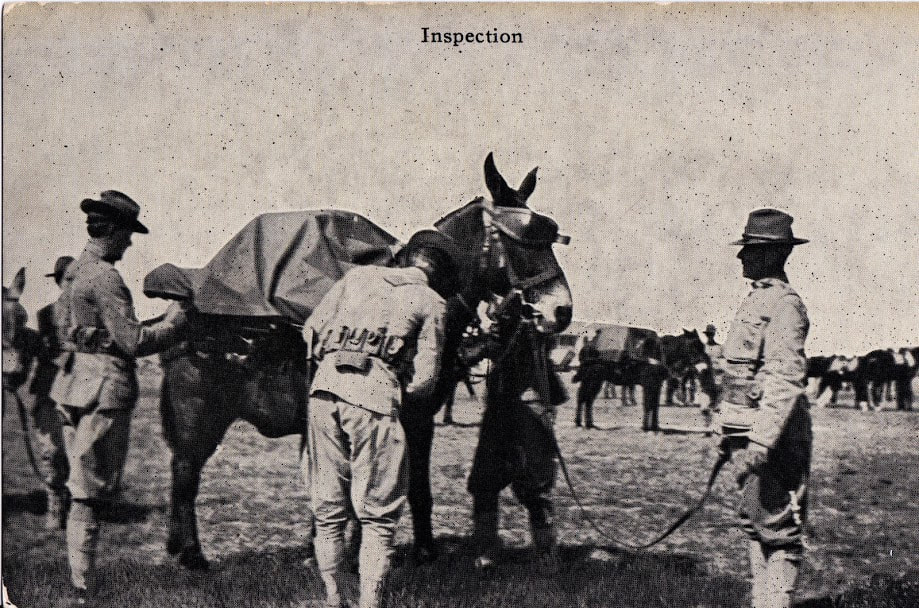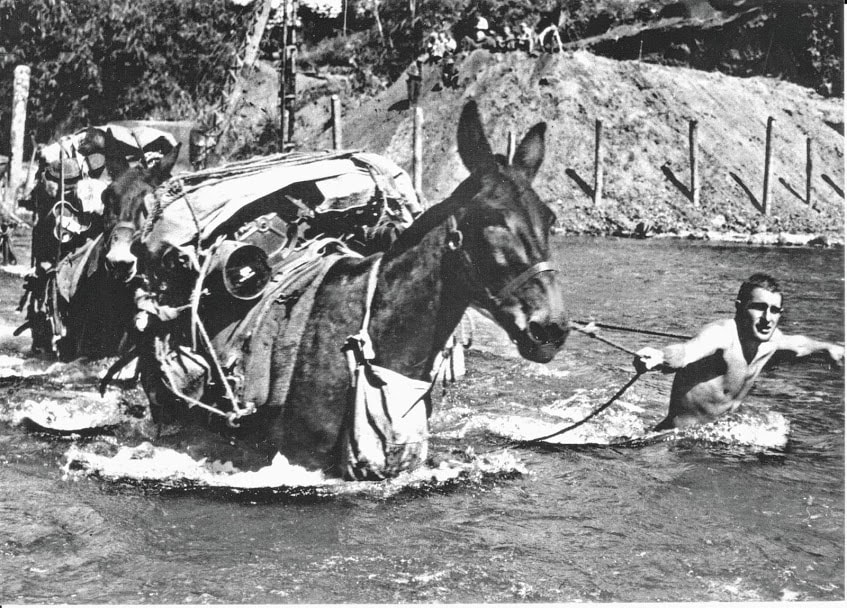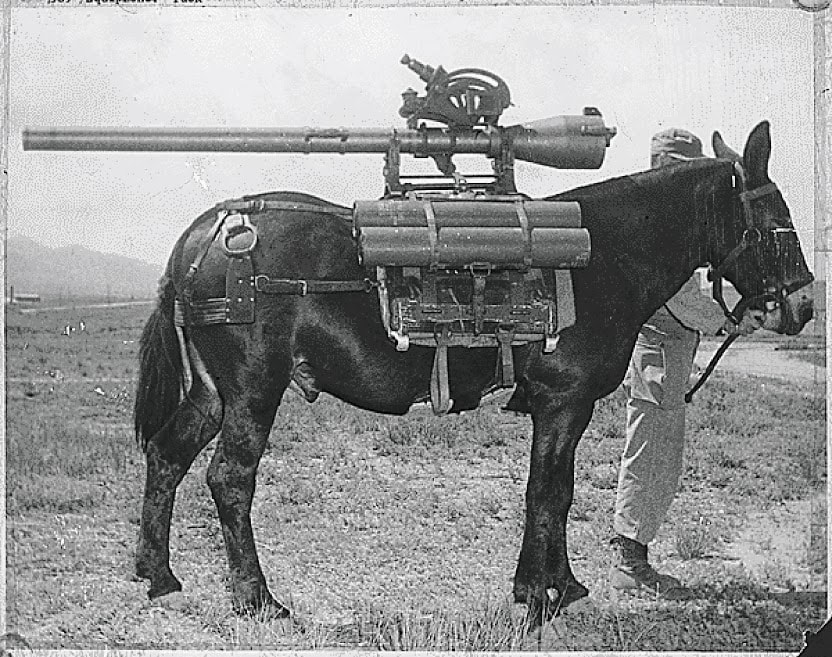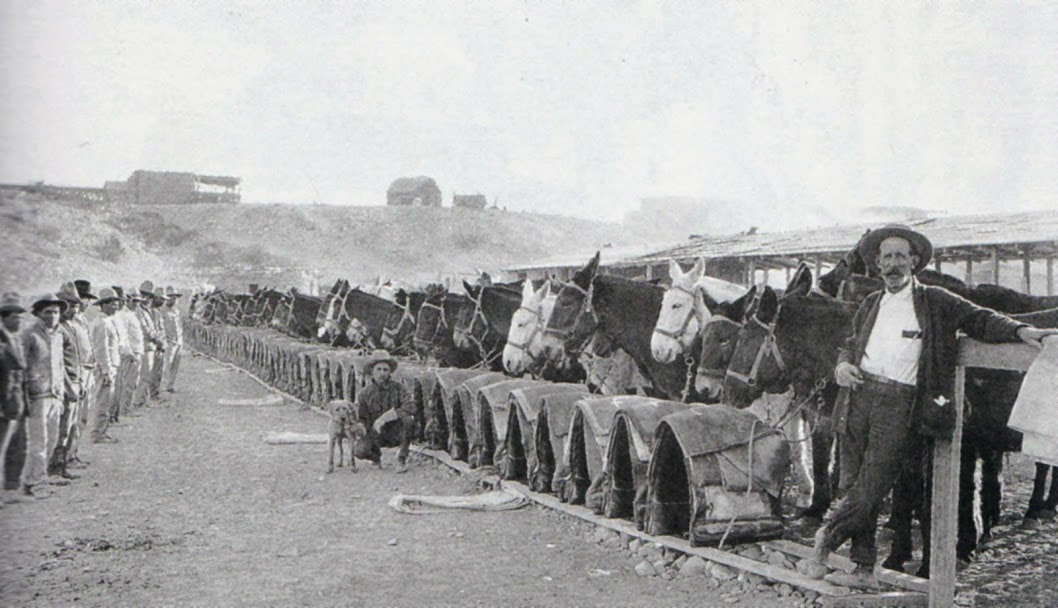|
Burma was lost, said General Alexander, “because mechanization was sent when animal transport should have been used. There were only two main roads in all of Burma.” This is the same General Alexander who was directing field operations of British and American Forces, under General Eisenhower, in Tunisia. Alexander commanded British troops in Burma. War is the most practical thing on earth! Man hasn’t yet made the machine that will replace the foot soldier or the pack mule. Terrain and weather still dominate the battlefield. When the going got tough in Tunisia: when food, ammunition and even water were needed by troops in position where trucks could not reach them; when fog enshrouded planes and jeeps spun in the mud, the pack mule was brought into action—Yes, 2,000 of them were reported by the press. And more important, mule pack trains supplied oil, repair parts and gasoline to stalled tanks, by routes wheeled vehicles could not traverse. Normal supply routes were destroyed or blocked by enemy fire. And tanks, like cavalry, cannot be tied to supply routes. Supply must reach out and deliver. The tactical combination of armored with other forces, in a swiftly moving campaign is difficult, but the greater problem is supply and transport at the speed and range that are necessary—and the vaunted jeep has no place where the going is steep. War Department radiocast of the Bureau of Public Relations, 3 April, 1943, stated: “the territory in which Americans in Tunisia have been fighting in so rugged, so wild, that even Jeeps cannot navigate the hills and so the American Army is being supplied by mule trains.” In a recent test in the high Rockies at Camp Hale, Colo., between Jeeps, Ski troops and Pack Mules the mules won, with the Jeep first out, blocked by snow. Where motors can’t go, pack units will flow. The pack mule can go wherever a man can go, with the use of his hands. The Press reports “long lines of mule trains are common sight in New Guinea.” Pack artillery is the artillery weapon for the jungle and the mountains of the tropics. Germany transported pack artillery by plane to Narvik, Norway. Italian mechanization failed in winter warfare in Greece, but Greek Pack Artillery climbed the mountains and plowed through the snow. Russia could not use its motorized equipment in winter, and Japan’s mechanization, due to mud and narrow mountain passes, failed in China. With the Chinese fighting desperately, but without artillery, the Chinese Mission appealed for a packsaddle to 75 mm artillery on the small 800 pound Mongolian ponies. Thousands of these sturdy ponies are packing American 75 mm. Howitzers on specially designed Phillips’ saddles—to the distress of the Japanese! Three plants are engaged in the production of the saddles. Press dispatch of 3 June, 1943—‘”The Chinese battle of Stalingrad’ was fought around Shilpei! The Japanese were unable to use their tanks and big guns in the mountains. They suffered about 30,000 casualties.” Chinese pack artillery had moved through and around the narrow passes and used their American 77 mm Howitzers with telling and deadly effect. The Tokyo Gazette reported: “The usefulness of the horse in modern warfare is one of the discoveries of the present conflict, particularly in battles on the rugged steeps and in the narrow passes of the Chinese Mountains.” The essential clue to success in modern warfare is a balanced load force of all arms, with the necessary teamwork between its component elements, plus a commander who has a really sound knowledge of the mechanism of the war—i.e. topography, movement and supply, with supply the greater problem. The Phillips’ Packsaddle won its place in the world by competition with the packsaddles of the principal military powers. The saddle also won first place in tests conducted by the Army Service Boards, winning each of three 500-mile marches conducted by Pack Artillery Boards. No other piece of Army equipment ever won such recognition. Over 75,000 of these packsaddles were made in the last three years. Phillips’ Packsaddles are in use in all parts of the globe, where United Nations troops are fighting, and also in many friendly Allied countries. Twenty thousand mules were purchased by the Army in the last eight months—while only 2,000 were purchased by all buyers in 1940. The fact that roads are blasted both by artillery and bombs, and that mines are planted along normal routes, makes it all the more important that supply pack trains and pack artillery be made a part of military forces. Where packsaddles are necessary, all other matters are secondary. Col. Albert E. Phillips Army Navy Journal, July 24, 1943 Mule Days program --1987 Many thanks to Ted Faye for sharing these pictures from his collection.
2 Comments
Leave a Reply. |
AuthorAmerican Mule Museum: Telling the story of How the West Was Built – One Mule at a Time Archives
January 2021
Categories |



